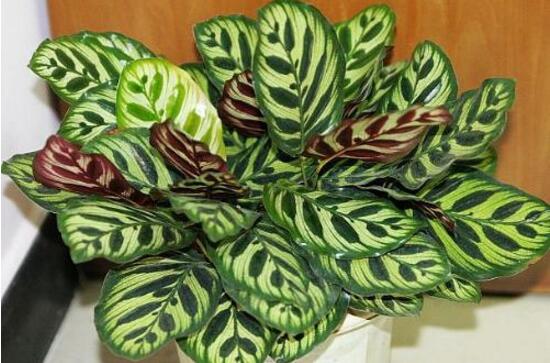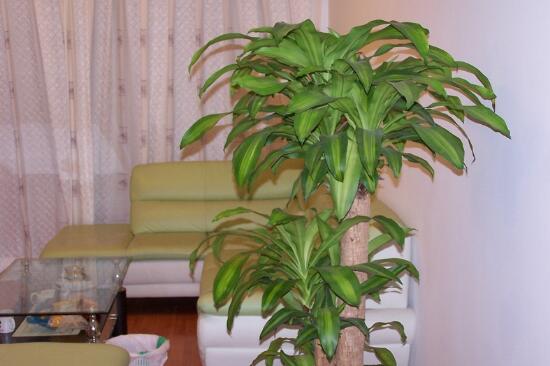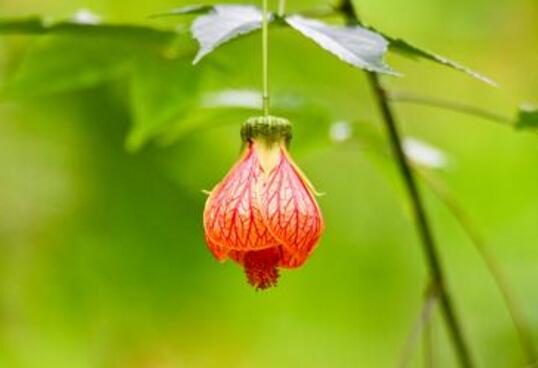What if the peacock bamboo taro is not tall? it is the key to achieve 5 points to grow ferociously / to control fertilization.
Peacock taro is a beautiful foliage plant with broad leaves and a pattern of peacock feathers, which looks particularly charming. But if the plant is not tall, the beauty of bare leaves is not good, because the whole will be very awkward, then how to do if the peacock taro is not tall? In this regard, the editor summed up 5 points, as long as we do, the peacock taro will grow ferociously, let's go and have a look!
First, the peacock bamboo taro is not tall, find the reason

To say that peacock taro is not tall, the first thing that comes to mind is fertilizer. After all, without sufficient nutrients, how can it grow up? In addition, the discomfort of temperature and light is also the key, because they are indispensable in the process of peacock taro, once there is negligence, it is normal not to grow tall. In addition, there are many reasons why the peacock taro is not tall. Let's move on to the details.
Second, the reasons for the low growth of peacock bamboo taro and its solutions.
1. Improper fertilization
Insufficient fertilization of ①: in the growing period of peacock bamboo taro, we have to apply liquid fertilizer to it once a month, so as to ensure the nutrients needed for plant growth and promote its healthy growth. Once the fertilizer is insufficient, the plant will not grow tall without the support of nutrients. Solution: appropriate amount of fertilizer, pay attention to the fertilizer can not be concentrated, can not be more, to meet the needs of plant growth.
Excessive ② fertilization: the growth of peacock taro is inseparable from nutrients, but if the fertilization is too much or too thick, it will also lead to the problem of plant dwarfism. Solution: irrigate with water, dilute fertilizer, wait for the plant to recover before normal maintenance.
2. Discomfort in temperature and light
In addition to fertilization, the reason for the low growth of peacock taro may be due to uncomfortable temperature or insufficient light.
① temperature discomfort: as far as the habit of peacock bamboo taro is concerned, it likes warmth, is not cold-resistant, and avoids high temperature, so once the temperature is uncomfortable, it may cause the plant not to grow high. Solution: control the room temperature above 16 ℃, but less than 30 ℃.
② light is insufficient: as a foliage plant, a large part of the nutrients of peacock taro are produced by photosynthesis. Therefore, once the light is not enough, it will also cause a lack of nutrients, and the result is that the peacock bamboo taro is not tall. Solution: give it plenty of light, but don't expose it to the sun, so move the plant to a cool place when it's hot in summer.
3. Discomfort of basin soil
In the culture method of peacock taro, it is mentioned that the plant should be changed at the right time to supplement the nutrients in the basin soil, so the reason why the peacock bamboo taro is not tall may be due to the insufficient supply of nutrients in the basin soil.
Solution: change the basin for peacock taro and replace it with fertile, loose and well-drained soil, preferably slightly acidic rotten leaf soil, or a mixture of mature base fertilizer, rotten leaf soil, peat and river sand.
4. Insufficient watering
If the above points can be excluded, the reason why the peacock taro does not grow tall may be due to underwatering. Because the peacock bamboo taro likes to be wet, especially in its growing season, once it is not watered enough, it can not meet the needs of plant growth, the natural growth is not high.
Solution: properly increase the amount of water in the growing season to keep the environment moist. However, it should be noted that the amount of water should be controlled in winter, as long as the basin soil is not dry, and then gradually increase the amount of water in early spring.
Generally speaking, it is not difficult to raise peacock taro, but we should also satisfy its growth habits, otherwise it will not only grow short, but also cause peacock taro leaves yellowing and peacock taro leaves curling. So in the daily breeding, we must follow the method to raise! As to whether the peacock taro is tall or not, the editor has introduced it here, hoping to give you some help.
What if the peacock bamboo taro is not tall?
Suitable temperature and light of peacock bamboo taro
One of the reasons why peacock taro does not grow tall is that the temperature is uncomfortable, too high or too low, or insufficient light. As far as the habits of peacock taro are concerned, they like the warm and humid cool environment, do not like low temperature conditions and strong wind conditions, and then pay special attention to not being exposed to the sun, so the plants should be moved to the shade during the high temperature in summer. In addition, we must reject the high-temperature environment, keep the ambient temperature below 30 degrees, often spray water ventilation, cooling and heat preservation, in order to avoid withered and yellow leaves and so on. Of course, in winter, it is necessary to increase the light and temperature appropriately.
Suitable basin soil conditions of peacock bamboo taro
The second reason why the growth of peacock taro is not high is the insufficient supply of nutrients in basin soil, because peacock bamboo taro likes fertile, loose and well-drained soil, preferably slightly acidic rotten leaf soil, or a mixture of mature base fertilizer, rotten leaf soil, peat and river sand.
The correct watering method of peacock bamboo taro
The third reason why peacock bamboo taro does not grow tall is the lack of water supply. It has been mentioned before that peacock bamboo taro likes to be moist, especially in its growing season, so it is necessary to increase the amount of water and spray water at the right time to keep the environment moist. In winter, it is necessary to control the amount of water, as long as the basin soil is not dry, wait until the early spring and then gradually increase the amount of water.
Correct fertilization method of Peacock Bamboo Taro
The fourth reason why peacock bamboo taro does not grow high is that improper fertilization leads to plant malnutrition. During the growing period of peacock taro, liquid fertilizer should be applied once a month to ensure the nutrients needed for plant growth and promote its healthy growth. As for the variety of fertilizer, mainly phosphate fertilizer, potash fertilizer, should not use too much nitrogen fertilizer. Improper fertilization will lead to the problem of plant dwarfism. In addition to applying fertilizer, liquid fertilizer can also be sprayed on the leaves and then drenched with water. Special attention should be paid to stop fertilizing after entering winter.
What are the advantages of raising peacock bamboo taro in the family (fengshui effect) what if the peacock bamboo taro is not tall?
Everyone must know more about peacock bamboo taro, which is named because its leaves are very similar to the beautiful feathers of peacocks. It likes a warm and humid environment and is very suitable for family planting. Its ornamental value is very high, like evergreen, the four seasons are evergreen, and the leaves are thick and bright. Not only that, it also has a very good fengshui effect.
What are the advantages of raising peacock bamboo taro in the family (fengshui effect)
Peacock bamboo taro is a shady plant, can be placed in the bathroom at home, not only play a role in purifying the air, but also rich.
What if the peacock bamboo taro is not tall?
1. Reason: the temperature is uncomfortable, too high or too low, or insufficient light.
As far as the habits of peacock taro are concerned, they like the warm and humid cool environment, do not like low temperature conditions and strong wind conditions, and then pay special attention to not being exposed to the sun, so the plants should be moved to the shade during the high temperature in summer. In addition, we must reject the high-temperature environment, keep the ambient temperature below 30 degrees, often spray water ventilation, cooling and heat preservation, in order to avoid withered and yellow leaves and so on. Of course, in winter, it is necessary to increase the light and temperature appropriately.
2. The reason: the nutrition supply of basin soil is insufficient.
Because peacock taro likes fertile and loose soil with good drainage conditions, preferably slightly acidic rotten leaf soil, or a mixture of mature base fertilizer, rotten leaf soil, peat and river sand.
Reason: insufficient water supply. It has been mentioned before that peacock bamboo taro likes to be moist, especially in its growing season, so it is necessary to increase the amount of water and spray water at the right time to keep the environment moist. In winter, it is necessary to control the amount of water, as long as the basin soil is not dry, wait until the early spring and then gradually increase the amount of water. 3. Reason: improper fertilization leads to plant malnutrition.
During the growing period of peacock taro, liquid fertilizer should be applied once a month to ensure the nutrients needed for plant growth and promote its healthy growth. As for the variety of fertilizer, mainly phosphate fertilizer, potash fertilizer, should not use too much nitrogen fertilizer. Improper fertilization will lead to the problem of plant dwarfism. In addition to applying fertilizer, liquid fertilizer can also be sprayed on the leaves and then drenched with water. Special attention should be paid to stop fertilizing after entering winter.
Propagation methods of Peacock Bamboo Taro
1. Ramet
Ramet propagation is carried out every year when the daily temperature is about 20 ℃ in early summer. After the old plant with dense growth is dug up, it is appropriate to leave 2-3 lingering buds in each section along the underground rhizome. Immediately after cutting, it is placed in a basin, placed in a cool place for a week, and then gradually moved to a place with sufficient light. The moisture should be controlled at the initial stage of ramet planting, and the new roots should be fully watered.
2. Cuttage
Cuttage propagation usually selects young branches with 2 to 3 leaves at the base as cuttings in summer, or uses some kinds of stolon cuttings. It can be mixed with peat soil and river sand, or vermiculite and perlite can be used as substrates to keep it moist. It can take root in about 5 weeks and be planted in pots.
Control methods of Leaf spot of Peacock Bamboo Taro
1. Harm
The greatest ornamental value of peacock bamboo taro lies in its leaves, which are engraved to say that leaf spots are fatal to them. When leaf spot disease occurs, the leaves will gradually dry up, shrink, and even gradually fall off and die.
2. Symptoms
There are already white and light green markings on peacock taro leaves. In the early stage of leaf spot disease, nothing can be seen without careful observation, but with the spread of the disease, there will be a lot of yellowish brown near-round disease spots on the leaves. These disease spots will gradually link together, with halos on the periphery. In the later stage, the disease spot expands, and the whole leaf will turn yellow and wither.
3. The regularity of the disease
The occurrence of leaf spot is mainly related to the environment, such as high temperature and humidity, poor air circulation, excessive planting density of plants, more weeds and rotten leaves in potted plants, heavy fertilization, more nitrogen fertilizer and so on.
4. Prevention and control methods
Strengthen cultivation management and control temperature. The growing season should be fully watered to keep the basin soil moist, but not too wet, otherwise the roots will rot easily, or even the whole plant will die. Although it likes to grow in low luminosity or shade, it is not suitable to stay indoors for a long time. It is necessary to accept sunlight in autumn and winter to maintain the unique brilliance of leaves. Keep it dry in winter, if it is too wet, it is easy to rot the root or the basal leaves turn yellow. During the growing period, dilute liquid fertilizer was applied once every half month to enhance its disease resistance.
Once diseased leaves are found, remove them immediately so as not to infect other leaves. In the early stage of the disease, 25% prochloraz EC (such as Guoguang Bixian) was sprayed 500-600 times, or 50% manganese zinc wettable powder (such as Guoguang Yingna) 400-600 times. Use it 2-3 times at intervals of 7-10 days.
Peacock bamboo taro likes to grow in a semi-cool environment, so it will grow well indoors. We breed it at home to beautify the home environment, but we still need to know more about its growth habits and master some skills in the process of maintenance.
- Prev

How often do Brazilian wood be watered, and the method of watering Brazilian wood / once a day on sunny days
Brazilian wood, flower friends should be no stranger, it is a beautiful plant shape, glossy leaves of the foliage plant, by many flower friends at home. However, if you want Brazilian wood to grow well, reasonable watering is the key, then how to water Brazilian wood? How often do Brazilian wood be watered? The following is the watering method of Brazilian wood
- Next

Wind chimes wilted how to deal with, learn four tricks to avoid wilting / attached treatment skills
Although the flowering period of Campanula is not the longest, the viewing time of as long as 2 months from April to June can also make many flower friends feast their eyes, but some flower friends will encounter the wilting of the wind chimes, which not only affects the beauty but also shows that there are problems in maintenance and management. and how to deal with the wilting of the wind chimes? The editor will tell you the method.
Related
- Fuxing push coffee new agricultural production and marketing class: lack of small-scale processing plants
- Jujube rice field leisure farm deep ploughing Yilan for five years to create a space for organic food and play
- Nongyu Farm-A trial of organic papaya for brave women with advanced technology
- Four points for attention in the prevention and control of diseases and insect pests of edible fungi
- How to add nutrient solution to Edible Fungi
- Is there any good way to control edible fungus mites?
- Open Inoculation Technology of Edible Fungi
- Is there any clever way to use fertilizer for edible fungus in winter?
- What agents are used to kill the pathogens of edible fungi in the mushroom shed?
- Rapid drying of Edible Fungi

